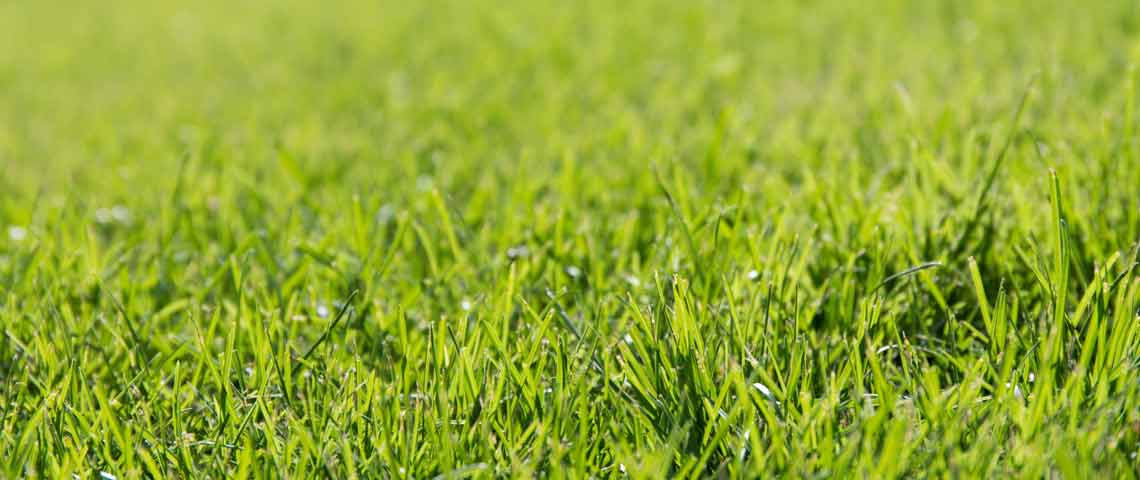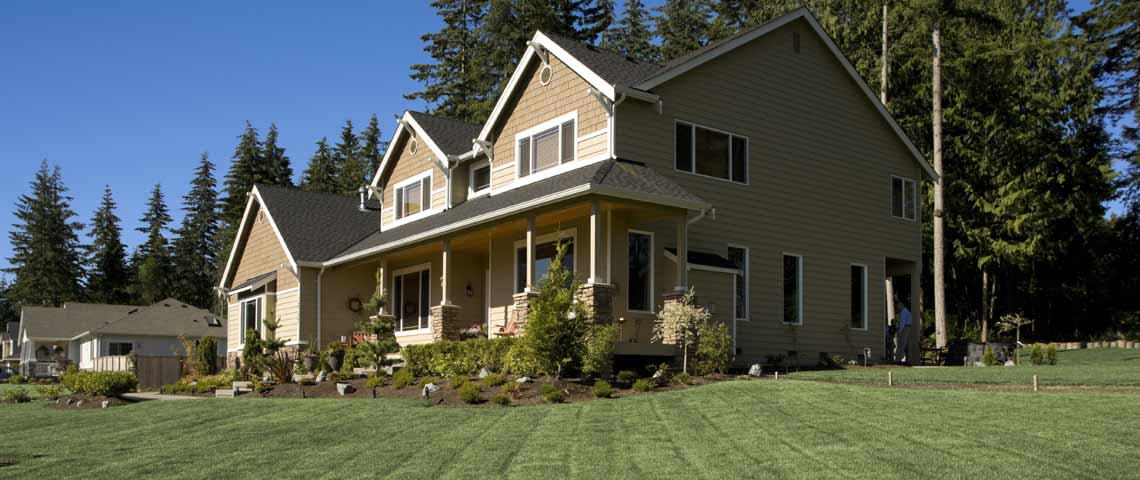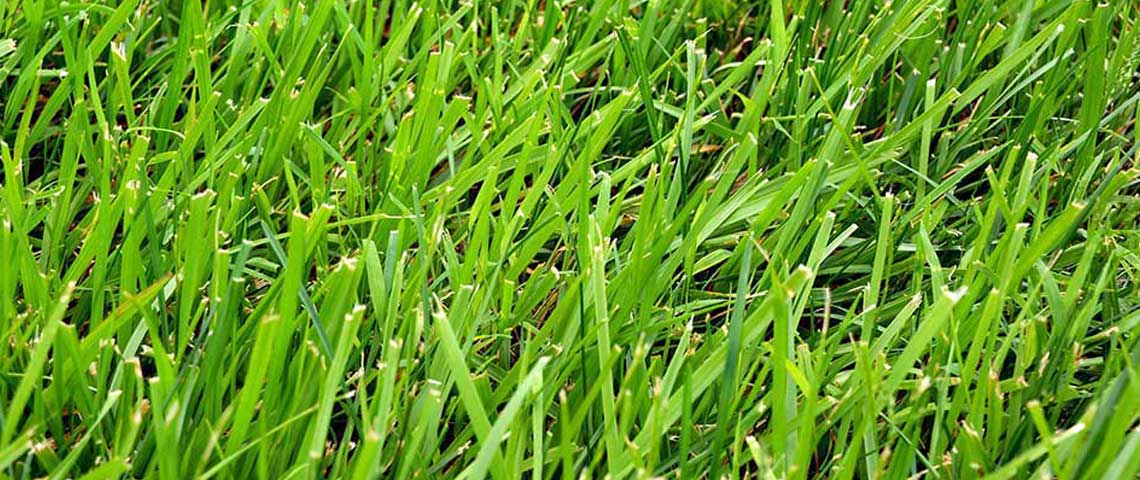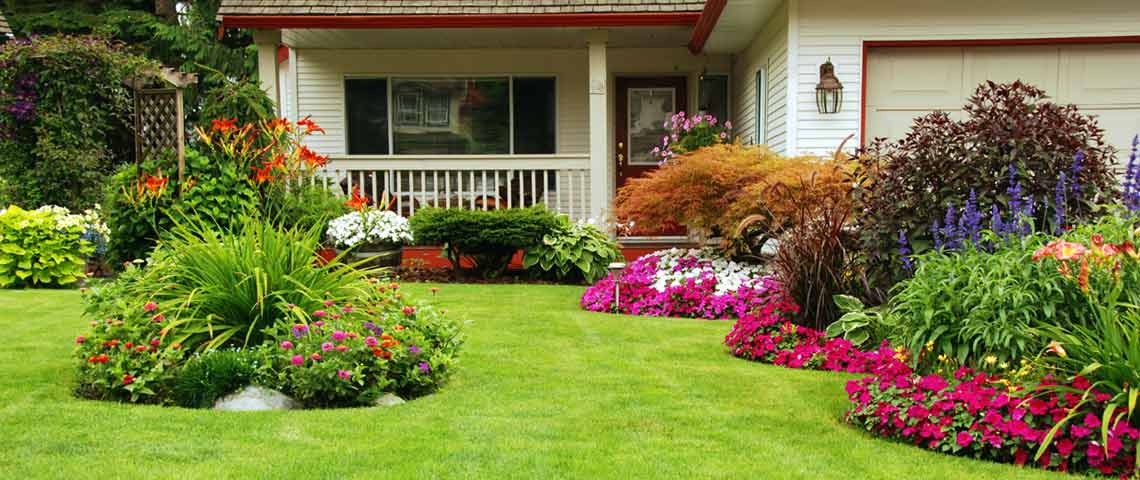All You Need to Know About Annual Ryegrass
Annual ryegrass is a fast-growing, short-lived grass used throughout the United States to support both northern and southern lawns. Like its close relative perennial ryegrass, annual ryegrass germinates and establishes quickly. It's commonly used to stabilize new plantings, bring fast color to new lawns and add winter color to dormant southern lawns. Depending on your location and your lawn goals, annual ryegrass may be the solution for you.
- Annual Ryegrass At a Glance
- Annual Ryegrass Basics
- Other Annual Ryegrass Considerations
- Annual Ryegrass Lawn Care Calendar

Annual ryegrass helps stabilize new lawns as permanent grasses establish.
Annual Ryegrass At a Glance
- Short-lived, cool-season lawn grass.
- Fast germination and establishment.
- Used for quick color and erosion control.
- Ideal for winter overseeding of warm-season lawns.
- Resists disease and tolerates foot traffic.

Annual ryegrass is coarser in texture and lighter in color than perennial ryegrass.
Annual Ryegrass Basics
Also known as Italian ryegrass, annual ryegrass has multiple uses, including erosion control, temporary turf grass, agricultural cover crop and seasonal pasture grass. As its common names suggest, this Mediterranean-basin native has a short lifespan and limited tolerance for temperature extremes.1 Annual ryegrass is not related to the rye grain used for making breads and whiskeys.
Compared to perennial ryegrass, annual ryegrass has a lighter green color, coarser texture and less uniform growth habit. While both grasses offer quick germination, establishment and color, only perennial ryegrass comes back reliably year after year as part of a permanent northern lawn. Annual ryegrass flourishes in moderate northern summers and moderate southern winters, but it struggles and dies out in extreme cold and heat.2,3
Southern and western U.S. lawn owners often use annual ryegrass for winter color when warm-season grasses such as Bermudagrass go dormant in fall. Many lawn owners overseed their warm-season winter lawns with annual ryegrass to grow green grass in winter. Annual ryegrass germinates quickly and provides green color, then dies out as warm-season grasses come out of dormancy and summer heat returns.3

Without mowing and proper maintenance, annual ryegrass flowers prolifically.
Other Annual Ryegrass Considerations
Annual ryegrass has one of the fastest germination rates of all common turf grasses. With Pennington Annual Ryegrass Grass Seed, you'll see results in three to seven days under proper conditions. Like tall fescue and perennial ryegrass, annual ryegrass grows in clumps. Once established, it spreads slowly through vertical shoots known as tillers.
Compared to tall fescue and warm-season grasses, traditional annual ryegrass had limited tolerance for drought and heat. However, Pennington's improved annual ryegrass varieties offer better heat and drought tolerance, plus exceptional disease resistance. They also stand up to foot traffic and require less frequent mowing than common annual ryegrasses do.
Annual ryegrass is a popular ingredient in grass seed mixes for erosion-prone slopes and high-traffic areas like athletic fields or yards with active pets and kids. Its fast germination and rapid early growth allow grasses such as Kentucky bluegrass, which can take 15 to 30 days to germinate, time to get established. Annual ryegrass performs best in areas that receive at least six to eight hours of daily sun.

Some farmers plant annual ryegrass with clover for seasonal pastures and crop covers.
Annual Ryegrass Lawn Care Calendar
Like perennial ryegrass, annual ryegrass is a cool-season grass. This means it naturally peaks in growth during cool seasons of fall and spring. In areas with moderate winters and in southern lawns, fall is the best time to plant annual ryegrass. In northern areas with colder winters, spring plantings complement annual ryegrass' natural growth.
Because annual ryegrass is a temporary lawn grass, time your lawn care around the permanent grasses in your lawn. For cool-season grasses, such as tall fescue or Kentucky bluegrass, follow a lawn care schedule for cool-season lawns. For southern and western grasses, such as Bermudagrass, follow a warm-season lawn care schedule. If you're unsure of typical frost dates and weather patterns in your local area, check in with your county extension office. Then follow this basic lawn care calendar for lawns with temporary annual ryegrass support.
MARCH THROUGH MAY
Mowing
Start mowing northern lawns when they start growing. Maintain annual ryegrass at a height of 2 to 3 inches until slower grasses take hold. Then mow to maintain the recommended mowing height for your permanent grass.
In warm-season Bermudagrass lawns, mow at the recommended height of 1 to 1 1/2 inches. Annual ryegrass starts dying out as warm-season grasses take over and air temperatures surpass 80 degrees Fahrenheit. Low mowing heights help ensure overseeded annual ryegrass dies out quickly.
Weed Prevention and Fertilization
Prevent crabgrass and other weeds in northern and southern lawns while you fertilize in early spring. Apply Pennington UltraGreen Crabgrass Preventer Plus Fertilizer III 30-0-4 before soil temperatures reach 55°F. That's when crabgrass starts germinating. Before applying to newly seeded areas, wait at least 60 days after seeding.
Seeding and Overseeding
Like other cool-season grasses, annual ryegrass germinates best when soil temperatures are between 50°F and 65°F. By planting at this time, you help ensure fast germination, quick establishment and quick color. Early establishment in northern lawns enhances resilience against heat and drought.
Weed Control and Fertilization
Once permanent grasses are actively growing in late spring, control emerged broadleaf weeds while you fertilize with Pennington UltraGreen Weed & Feed 30-0-4. Do not apply to newly seeded areas until you've mowed them at least three times. After application, wait at least three weeks before reseeding treated areas.
Watering
Supplement rainfall with irrigation, as needed, so your established lawn gets about 1 inch of water per week. Deep, thorough watering encourages deeper root growth, which helps resist drought.
JUNE THROUGH AUGUST
Mowing
Continue to mow your lawn at the recommended height for your permanent lawn grass. During times of heat and low rainfall in northern lawns, increase your mowing height by 1 to 1 1/2 inches to help grasses resist stress. Never remove more than one-third of the blade at once.
Fertilization
Fertilize your northern or southern lawn with Pennington UltraGreen Lawn Fertilizer 30-0-4.
Watering
Supplement rainfall with irrigation, as needed, so permanent grasses get 1 to 1 1/4 inches of water per week.
Pest Control
Control disruptive lawn pests — including grubs, chinch bugs and beetles — with Sevin Lawn Insect Killer Granules. Proactive treatments help prevent damage above and below ground.
Soil Testing
Every three to four years, test your lawn soil to confirm nutrient availability. Annual ryegrass adapts to a wide variety of soils, so focus on the needs of your permanent lawn grass type. Most plants, including common lawn grasses, do well when soil pH stays near 6.0 to 7.0.
SEPTEMBER THROUGH NOVEMBER
Mowing
Continue to maintain your lawn at the recommended height for your permanent grasses. Keep mowing until growth stops.
Weed Control and Fertilization
Six to eight weeks before your first expected frost, fertilize established lawns and treat active broadleaf weeds with Pennington UltraGreen Winterizer Plus Weed & Feed Fertilizer 22-0-14. If you are seeding or overseeding — for thicker northern lawns or southern winter color — use Pennington UltraGreen Lawn Fertilizer 30-0-4. Spot-treat troublesome lawn weeds instead.
Seeding and Overseeding
Early fall is the best time to plant cool-season grasses. Annual ryegrass provides important support as permanent grasses take off. Seed northern lawns approximately 45 days before you expect your area's first fall frost. Annual ryegrass' ability to endure cold northern temperatures depends, in part, on how well it establishes before winter hits. Overseed winter warm-season lawns with annual ryegrass once warm-season grasses begin to go dormant.
Watering
Gradually reduce watering established northern lawns so your grass gets 1 inch of water every 10 to 14 days. For southern lawns, continue irrigating so that annual ryegrass gets 1 to 1 1/4 inches of weekly water.
Leaf Management
Rake or mulch leaves so lawns that include annual ryegrass enter winter free of leaf cover.
DECEMBER THROUGH FEBRUARY
Southern Lawn Maintenance
Keep mowing and watering annual ryegrass in dormant warm-season winter lawns. Annual ryegrass requires regular irrigation of up to 1 1/4 inches of water per week to maintain winter color. A mowing height of 2 to 3 inches keeps clump-forming annual ryegrass looking its winter best.
Northern Lawn Maintenance
Keep your lawn free of sticks, stones and other winter debris. When soil thaws, flush areas damaged by pet urine or de-icing. Get your lawn tools ready for spring.
When you need quick erosion control or temporary turf grass in northern or southern lawns, annual ryegrass delivers stability and color fast. With premium grass seed from Pennington, you can give your temporary and permanent lawn the quality support it needs. At Pennington, we're here to help you and your lawn succeed.
Always read product labels thoroughly and follow instructions.
Sources:
1. Hannaway, D., et al., "Annual Ryegrass," Oregon State University Extension.
2. University of Wisconsin-Madison, "Annual Ryegrass," UW-Madison Extension.
3. UC Statewide Integrated Pest Management Program, "Annual Ryegrass – Lolium Multiflorum," University of California Agriculture & Natural Resources.
Photo Credits:
Photo credit: Matt Lavin, "Lolium multiflorum" (CC BY-SA 2.0)
Photo credit: Harry Rose, "Lolium multiflorum plant1" (CC BY 2.0)





